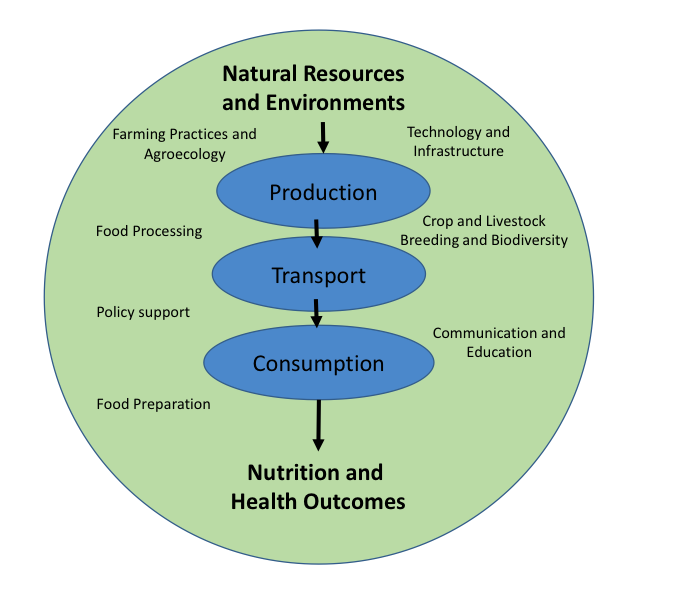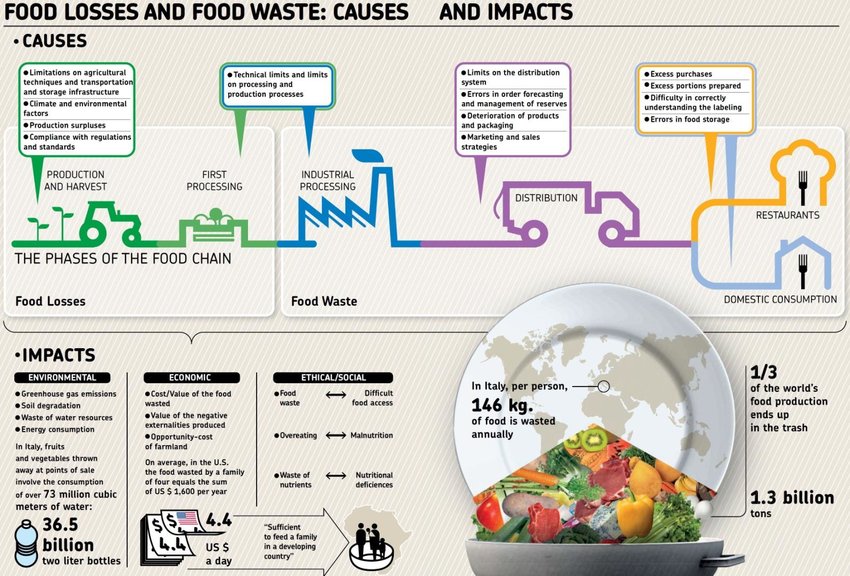balancing food production with demand in food waste
Takt time is the rate at which parts or products must be produced in order to meet customer demand. Production is mostly concentrated in countries such as India China Japan Thailand and Vietnam.
Course 1 Reduce Growth In Demand For Food And Other Agricultural Products Synthesis World Resources Institute Research
In 2015 global rice bran oil RBO market size was estimated at over 12 million tons in 2015 Rice Bran Oil Market 2016.
. Reducing Food Loss and Waste is the second installment in the series that forms the foundation of the World Resources Report 2013-14. Loss and waste occurs all along the food chain from field to fork. As the world faces the challenge of feeding a global population projected to reach 97 billion by 2050 demand for animal protein continues to rise.
Line balancing is a production strategy that involves balancing operator and machine time to match the production rate to the takt time. There are many decisions to be made and this requires a manager who can handle planning organizing and controlling the various aspects of production. This thesis aims to model the demand for food waste econometrically using a panel data approach and looks at the impact of the.
Annually approximately 13 billion tons of food is lost worldwide accounting for. Recover food waste by connecting potential food donors to hunger relief organizations like food banks and pantries. With over 25 years in the food industry they offer right-fit solutions to clients.
As a first step priority should be given to balancing production with demand. As a result 150M in fresh food waste is eliminated annually and excess shrink is reduced by 30. And because of the growing population global food production will need to increase by 60 percent by 2050.
Approximately one-third of food derived from animal protein production is currently lost or wasted. Action at every stage of the food supply chain is required to tackle this issue. Apart from food the other common variables in this diagram are people and animals.
Amazing Solutions to Food Waste 1. In developing countries food losses occur in the production chain and hit small farmers the hardest. That means at this current rate food waste will skyrocket.
The ratio of food demand over production is the main factor affecting the level of food security but other factors include fair food distribution as well as energy and materials efficiency which has an influence on all variables. This essentially translates to lesser use of natural resources to produce food which is not needed. Food loss differs from food waste With FAOs guidance SAVE FOOD has established a field programme to look at supply chains in individual developing countries and advise governments on ways to improve their efficiency.
For a given production line if production time is exactly equal to takt time then the line is perfectly balanced. Reducing food loss and waste by 25 percent by 2050 would close the food gap by 12 percent the land gap by 27 percent and the GHG mitigation gap by 15 percent. Innovation is driving growth in the global economy said.
Foremost precedence should be centered on balancing food production with the demand to reduce the problem of food wastage. Yet there is a lack of literature that empirically explores what influences peoples decisions to throw out food from an economic perspective. According to a report from the Food Waste Alliance its estimated that 30 percent of all food grown worldwide may be lost or wasted.
Approximately one-quarter of food produced for human consumption goes uneaten. In the UK food production is primarily committed to meeting the quality standards of grocery retailers export markets and the businesses in the foodservice sector. Nonetheless even if some regions increase their output and traders reduce the mismatch between supply and demand doubling food production by 2050 will undeniably be a major challenge.
Balancing food production with demand. There is widespread recognition that food waste imposes environmental and social costs on society. Previous research has investigated the use of food waste for anaerobic digestion but this process faces numerous drawbacks.
This saw buyers put in initial orders a year ahead then cementing the final figures a few weeks before the delivery date. Affected individuals fall into three groups. Reduce food waste by improving product development storage shoppingordering marketing labeling and cooking methods.
The first thing is to cut back on the use of natural resources in food production. Secondly more effort should go into developing better food harvesting storing processing and. Food production processing and availability also can affect community-level measures such as economic growth and social.
In hotels restaurants and the foodservice industry risk management tools can be. At the food production level 36 million tonnes of food surplus and waste is generated on UK farms every year a number which accounts for 72 of the total produce. Production planning basically means taking the resources of your foodservice operation and turning out products and services.
For example NexTec Group offers a variety of demand forecasting technologies through ERP CRM and Cloud-based products. 2 people involved in the rest of the food system eg processing manufacturing food service and retailing. It is forecast that a growing population and rising incomes will lead to increased demand for agricultural products putting more pressure on natural resources.
Growers tackled this with a forward contracting process. With the increase in demand for healthier food products rice byproduct could possibly increase as a food additive. In 2019 the industry reached a positive trade balance of more than 13 billion euros.
Sewage systems safe food energy efficient homes green transport global connectivity renewable energies or affordable and hygienic healthcare just. Balancing quantity quality and cost objectives usually involves several layers of management. The characterization of food waste can lead to the optimization of energy production through existing waste-to-energy conversion processes such as gasification and pyrolysis Andre 2006.
Reduce food loss and waste. Pretreatment of food waste eg by physical chemical or enzymatic methods is vital because this minimizes downstream processing and enhances biohydrogen yield. Marrying up production with consumer demand or using pull rather than push production is a key challenge facing food producers.
Production demand and waste data. Creating a Sustainable Food Future Executive Summary The Food and Agriculture Organization of the United Nations FAO estimates that 32 percent of all food produced in the world was lost or wasted in 2009. Several companies are introducing food waste solutions today that have the potential to revolutionize the food industry.
Food loss and waste entails poor use of resources and negative environmental impacts. This is why reducing food loss and waste is crucial. 1 people involved directly in agricultural food production eg farmers.
Tackling Food Loss and Waste Along the Value Chain. Recycle food waste to feed animals or to create compost bioenergy and natural fertilizers.

Sustainable Food Production Systems The Potential Of Pulses Sciencedirect

Course 1 Reduce Growth In Demand For Food And Other Agricultural Products Synthesis World Resources Institute Research

Food Systems Environments Production Distribution And Household Utilization Of Food Geog 3 The Future Of Food
Course 1 Reduce Growth In Demand For Food And Other Agricultural Products Synthesis World Resources Institute Research

Experts A Local Sustainable Food System Is Worth Billions Lake Forest Lake Bluff Il Patch Sustainable Food Systems Sustainability Sustainable Food

Ess Topic 5 2 Terrestrial Food Production Systems And Food Choices Amazing World Of Science With Mr Green
Belum ada Komentar untuk "balancing food production with demand in food waste"
Posting Komentar